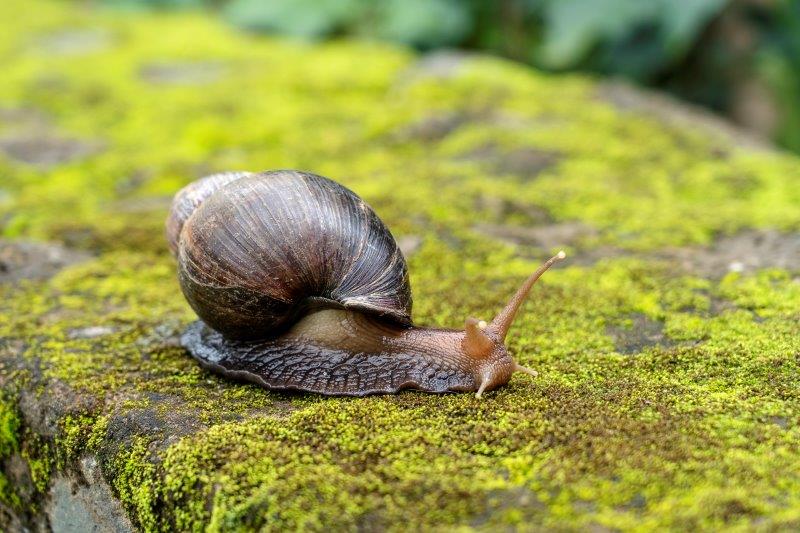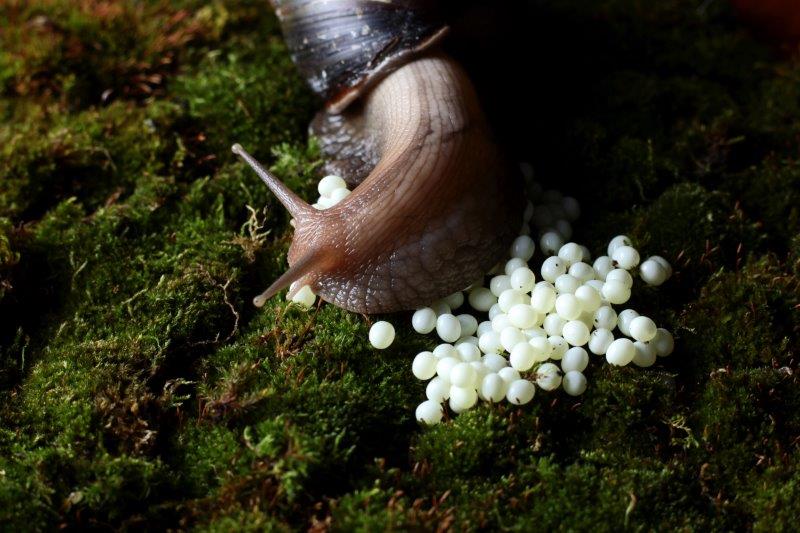Snails and slugs represent some of the most widespread and problematic pests in the garden known for their sporadic feeding habits on nearly any fruit or vegetable.
Snails are an invertebrate gastropod more closely related to clams, mollusks, and mussels rather than other arthropods such as insects and spiders. Other than a protective shell, there is actually no difference between snails and slugs and the term “slug” is merely used out of convenience and habit rather than reflecting a true classification.
It is argued that snails are less of a threat than slugs because their hardshell can impede mobility, potential food sources, and ability to hide from predators other than inside their shell. Snails are generally slow to reproduce and will undergo a period of winter dormancy (estivation) all from the safety of their shell.
How to Get Rid of Snails
- Snail Distribution: Snails are naturalized to just about everywhere in the world
- Snail Host Plants: Leafy greens including lettuces, brassicas, spinach, and fruiting crops
- Snail Damage: Aggressively chewed leaves and vegetation similar to grasshoppers
- Snail Life Cycle: 2-3 years
- Snail Eggs Per Lifetime: ~400 per year
- Snail Control: Diatomaceous earth, beer trap, eggshells, salt water, vinegar spray, removal by hand
- Snail Predators: Birds, beetles, rodents, snakes
- Most Common Snail in North America: Common Garden Snail (Cornu aspersum)

What Do Snails Look Like?
Whether referring to the aquatic species found in the ocean or the more familiar land-locked varieties found in the home garden, snails and slugs are essentially identical except that snails have hard protective shells while slugs do not.
This may seem obvious for some but, for others, there can be some confusion since snails are more closely related to aquatic mollusks and oysters than any garden insect.
Snail shells vary in color, shape, and size but, regardless of species, they’re nearly identical to gastropod shells you can expect to find on the beach. Depending on region, snails can mature anywhere from an inch up to a foot in length.
Snail Damage

Damage to plants from snails and slugs can look very similar to the damage caused by grasshoppers and earwigs because they each are plenty big enough to feed on the plant directly.
If suspicious of a snail or slug in your garden bed, look closely for a silvery residue left behind from the snail or slug, sometimes called a snail trail. This silvery streak is fairly noticeable even after it’s dried a little and turned iridescent in the sunlight.
If possible, check the chew marks on your damaged plant for clues because neither snails or slugs eat the veins or smaller secondary veins like grasshoppers.
Snails isolate the softest, most advantageous parts of the leaf but don’t quite “skeletonize” their host plant like the Japanese beetle.
What Do Snails Eat?
As garden pests, snails are notorious for feeding on tender leafy greens and even softer, more tender sprouts and seedlings. Snails are not picky about what’s in your garden, especially if it is young and tender.
Snail diets are extremely diverse because they have evolved to consume practically anything as they’re both omnivores and detritivores, thriving from decaying organic matter, waste, and other decomposed snails as readily as they do from leafy greens in your garden bed.
Snail infestations can be easy to recognize because of the haphazard and erratic chewing patterns on the leaves along with the trail of residue left behind.
Snail Eggs
Snails are not as quick to reproduce as other garden pests because snails do not live and die within a single season and may even take up to five years for some species to reach maturity before producing eggs.
However, once they reach sexual maturity, snails are hermaphroditic, containing male and female organs, and able to reproduce with every other snail.
Snails lay about 70-80 eggs at a time and keep them protected in damp and shallow crevices to avoid dehydration and detection.
Snail eggs are found in all sorts of colors, but generally share the same shape, look, and size as fish eggs.

How To Get Rid of Snails
The three most effective and popular means of ridding the garden of snails is to either simply remove them by hand, add diatomaceous earth to your garden, or create a beer trap.
Most home gardeners are more than familiar as to the importance of adding razor sharp eggshells and diatomaceous earth to your soil to deter snails, but few have experienced the immediate benefits of a beer trap. One small saucer of beer placed in the garden can lure dozens of slugs and snails in just hours as they are helpless against the fresh scent of yeast.
Try it once and experience the immediate results for yourself.
Garden Snail Treatment

- Diatomaceous Earth - One of the most effective treatments for caterpillars, slugs, and snails
- Snail Beer Trap - Fill a small tray or dish with beer and place in the garden
- Salt Water Spray - Dilute 1-2 tbsp salt and spray directly onto snails
- DIY Vinegar Spray - 1 part vinegar to 3 parts water
- Eggshells - Similar to diatomaceous earth, but decomposes much faster
- Coffee Grounds - Add caffeine-rich coffee grounds into your garden soil
- Removal By Hand - Snails are not a swarming species and can be individually removed by hand




